Mastering Motion - The Revolution of Photographer Eadweard Muybridge
A brilliant and eccentric photographer, Eadweard Muybridge pushed the limits of the camera's possibilities, creating world-famous images of animals and humans in motion. His pioneering work in photographic studies of motion and early work in motion-picture projection is pivotal in the history of the moving image.
Photographer Eadweard Muybridge and Motion
Born Edward James Muggeridge in Kingston upon Thames in England, he adopted the first name Eadweard as the original Anglo-Saxon form of Edward and the surname Muybridge believing it to be similarly archaic. Muybridge emigrated to the United States from England in the 1950s, where he became famous for his impressive, vast panoramas of American landscapes, such as the Yosemite valley, and his documentation of the rapidly growing nation, particularly in San Francisco.
Throughout his career, he lectured extensively in North America and Europe about his work, greatly influencing visual artists and the developing fields of scientific and industrial photography.

Daisy Galopping
In 1872, Leland Stanford, the industrialist and horseman, hired Muybridge to create a picture that would set a highly debated issue of whether there is a moment in a horse’s gait when all four hooves are off the ground at once. In 1878, using a wet plate process, Muybridge finally succeeded in photographing the horse in motion, proving there is indeed a moment when all four horse’s legs are gathered beneath the body. His model was a Kentucky-bred mare named Sallie Gardner.
He used 24 cameras arranged along a track parallel to the horse path, 27 inches apart, controlling shutters by trip wires triggered by the horse's legs. Showing what had never before been seen by the unaided eye, the series is often cited as an early silent film.These images created a great stir in Europe and the United States.
That same year, the groundbreaking work was published in the Scientific American, while other plates were reproduced in the French magazine La Nature.

Animal Locomotion
Gaining fame after successfully photographing the horse in motion, Muybridge began a correspondence with Thomas Eakins, artist and professor at the Pennsylvania Academy of Fine Arts, and with Fairman Rogers, an accomplished horseman as well as a former Penn engineering professor and trustee of both Penn and the Academy.
In Philadelphia, there was an appreciation of the science, technology and the art involved in his work, as well as the financial resources to back his work. In 1883, Muybridge was commissioned by the University of Pennsylvania in Philadelphia to undertake further studies.
Titled Animal Locomotion: An Electro-photographic Investigation of Consecutive Phases of Animal Movements, 1872–1885, this pioneering work was supposed to provide a comprehensive study of human and animal movement, capturing them in poses not previously seen by the naked eye. As part of the series, Muybridge created 781 photolithographic prints.
Working in an outdoor studio that consisted of a three-sided black shed and three batteries of cameras, he created exposers using electromagnets that released the shutters in sequence and at equal intervals. Improving his photographic techniques, he started using dry plate technology and electronically released shutters that fired sequentially through a clock-driven electrical device and allowed shorter exposure times.
The animal models were provided by the nearby Philadelphia Zoo. He studied the movement of a variety of animals, such as elephants, buffalos or horses. In one series of frames, Muybridge captured a bay horse and her rider proceeding down a track and over a hurdle by using twenty cameras placed at a right angle.
These works influenced both scientists and artists, such as the French artists Ernest Meissonier and Edgar Degas who in various versions of Rearing Horse recaptured the positions of the animal fixed by Muybridge.
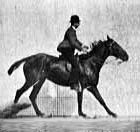

Buffalo Galloping
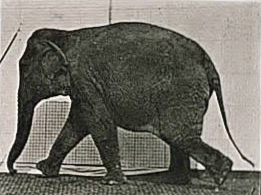
A Collection of The Human Movement
Besides animals, Muybridge also photographed human models provided by the Philadelphia Almshouse next to Penn's campus and by the University community. Either entirely nude or very lightly clothed, his models were photographed against a measuring grid background in a variety of action sequences, including walking up or down stairs, hammering on an anvil, carrying buckets of water, or throwing water over one another. Muybridge's sequences were very diverse, showing farm, industrial, construction, and household work, military maneuvers, and everyday activities.
Muybridge also photographed athletic activities such as baseball, cricket, boxing, wrestling, discus throwing, and a ballet dancer performing. All well-known University athletes, his models showed magnificent physiques and exhibited exquisitely the play of every muscle. In some works, the facial expressions accompanying skill and strength are a study in itself.
Dedicated to scientific accuracy and artistic composition, he posed himself in the nude for some of these sequences, such as this one showing him throwing a disc.
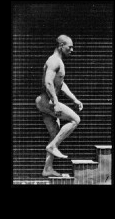
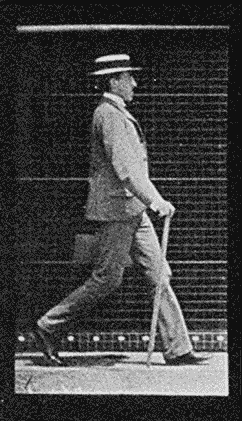
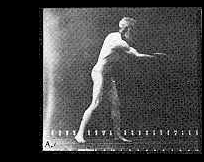
Phenakistoscope and Zoopraxiscope Animations
Invented in by the Belgian physicist Joseph Plateau and the Austrian professor of practical geometry Simon Stampfer in 1832, the phenakistiscope was the first widespread animation device that created a fluent illusion of motion. This illusion was created with the persistence of motion principle and it could only practically be viewed by one person at a time. Before Muybridge first captured movement with instantaneous photography in 1978, the device used posed pictures.
In 1879, Muybridge created his own device for displaying motion pictures – the zoopraxiscope. He borrowed the animated illusion of movement from moving image toys and combined it with the capacity for projection embodied in the magic lantern. The device employed glass discs on which pictures in the transparent paint were derived from his chronophotographic plates.
The stop-motion images were initially painted onto the glass as silhouettes, while subsequent series of discs used outline drawings printed onto the discs photographically, then colored by hand. For the first time, it was possible to project sequences of rapid movement informed by the camera onto a screen, marking a pivotal moment in the history of the moving image.
For the next 15 years, Muybridge used zoopraxiscope to illustrate his lectures throughout the US and Europe. By 1895, he had stopped using the device and even asked for negatives from of his later color cartoon discs to be utterly destroyed. Feeling these later discs were too far removed in terms of accuracy from his photographic studies, he did not want to damage his professional reputation.
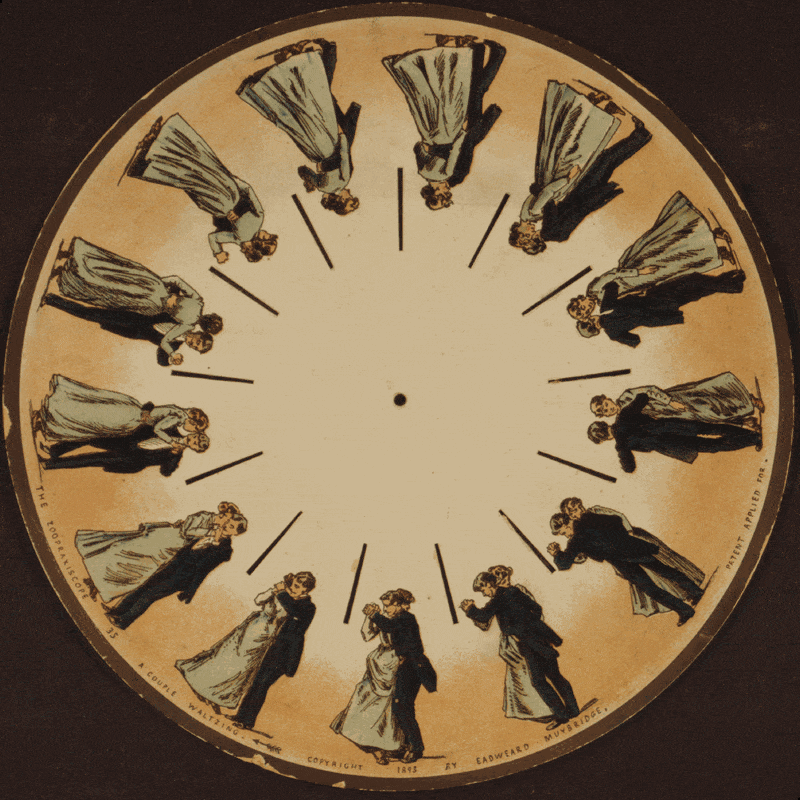
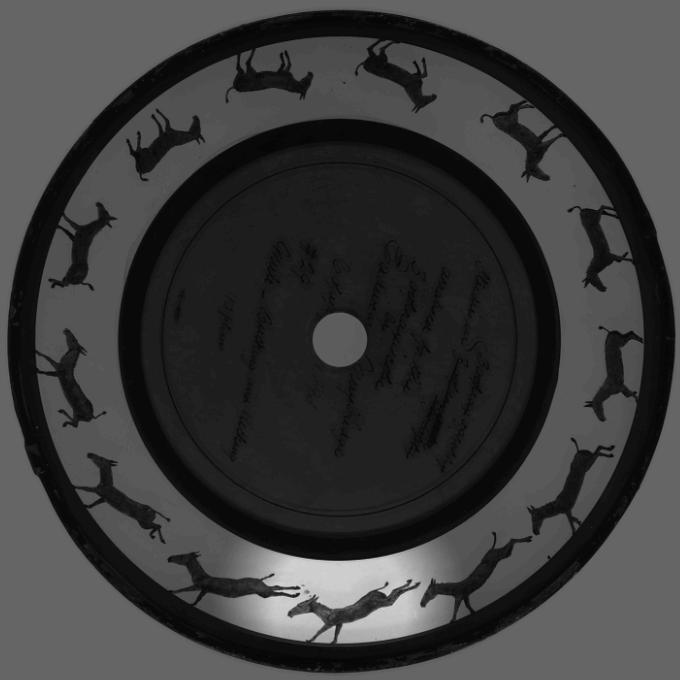
Featured image: Eadweard Muybridge - A Camel in Motion. All images via Wikimedia Commons, used for illustrative purposes only.
Can We Help?
Have a question or a technical issue? Want to learn more about our services to art dealers? Let us know and you'll hear from us within the next 24 hours.
